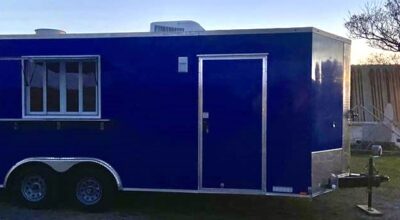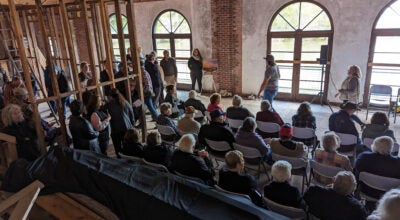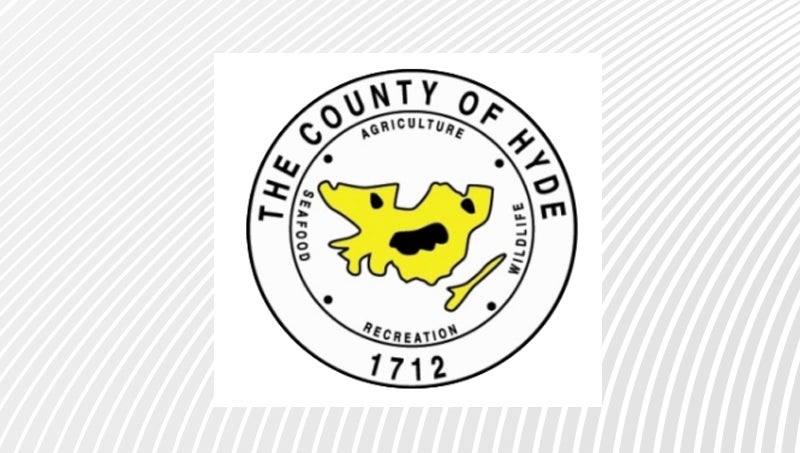Artificial reefs slow erosion from sea level rise
Published 8:28 pm Thursday, December 14, 2017
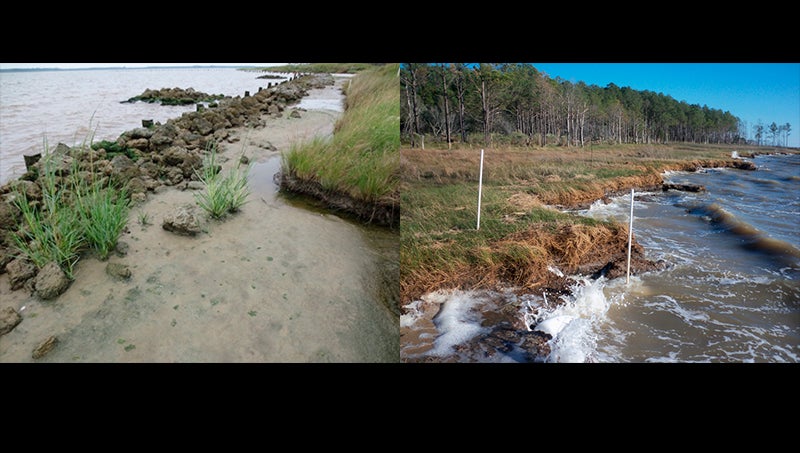
- BEFORE AND AFTER: Artificial reefs built at Swanquarter National Wildlife Refuge by the U.S. Fish and Wildlife Service and Nature Conservancy in North Carolina have been successful in rebuilding land previously lost to sea level rise erosion, as seen in these before and after photos. (Coleman Davis)
Sea level rise and erosion threaten more than coastal towns. These forces are also eating away the shoreline of Swanquarter National Wildlife Refuge in Hyde County. Since 2011, volunteer researchers have monitored sections of the refuge on Bell Island for erosion. The measurements show that an average of three feet of marsh erode annually. When waves hit the shore, the peaty soil falls off in chunks, leaving a scalloped edge.
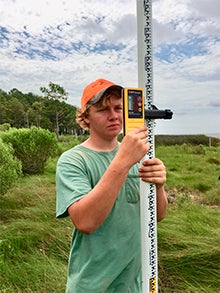
MEASURED: Coleman Davis takes measurements at Bell Island as part of his job as volunteer researcher with U.S. Fish and Wildlife Service and the Nature Conservancy in North Carolina.
In 2012, to lessen the effects of sea level rise and to protect the Bell Island shoreline, the U.S. Fish and Wildlife Service and the Nature Conservancy in North Carolina constructed a limestone stabilization reef about 30 feet from the shoreline. The reef reduces the power of the waves. With the erosion slowed and water behind the sill calmed, sand and silt have begun to accumulate between the shore and the rocks. This material builds up and becomes new beach for plants to recolonize and create marsh.
The reef also creates an environment for oysters and mussels, with the limestone providing cracks and crevices for the larvae to attach. These organisms help filter the water and provide food sources for blue crabs and water birds.
The volunteer researchers record erosion and accumulation at 10 sample sites, six of which are protected by the reef. In the protected zone, erosion has ceased, slowed or reversed. At the four unprotected sites, erosion continues. For instance, during one 2012 nor’easter, three feet of land was lost in a day.
The researchers’ measurements show that the stabilization reef at Bell Island is successfully protecting the marsh. Beyond the reef, the evidence of erosion is obvious. The unprotected shoreline is ravaged by storms and erosion bolstered by sea level rise. The agencies are hoping to install more sections of reef to continue the marsh recovery process.
Coleman Davis is a senior at Christ School in Arden and has served as a volunteer researcher on Swanquarter National Wildlife Refuge for the U.S. Fish and Wildlife Service and the Nature Conservancy in North Carolina since 2011.


